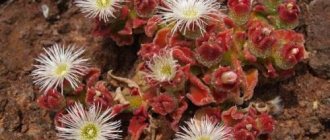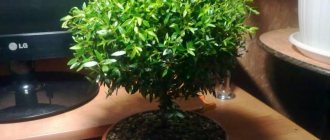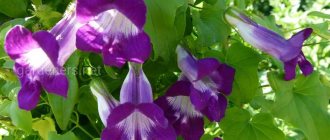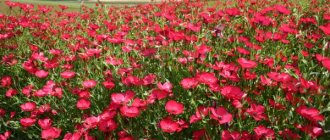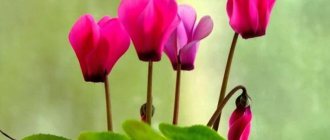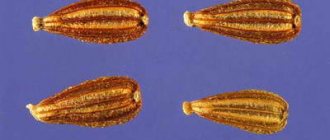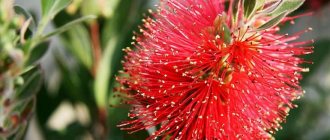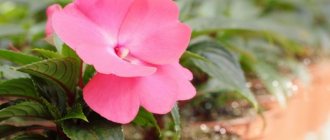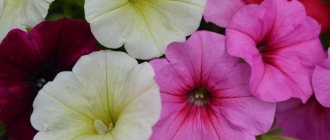Levisia (from Latin Lewisia) is a beautifully flowering plant, rarely found in the natural flora, which is small in size. This plant looks great in the decoration of gardens and parks. Flower growers respect Levisia for its unpretentiousness and long flowering time. In addition, the lifespan of one bush plays a big role in choosing a flower.
Botanical description of the plant
Levisia is a series of perennials that grow as grasses and belong to the Montiaceae or Portulaceae family. This is a lush plant of small size. It grows in the form of shrubs, so several flowers bloom on one individual at once, which makes the flower decorative. The perennial grows in one place for ten years, which also plays an important role in the choice of gardeners.
There are several different types of plants found in nature. Thus, some species can shed their leaves for the winter, while others remain green all year round. Evergreen Levisias are more demanding in terms of growing conditions and require special temperatures and air humidity. Therefore, plants that die off during the winter are more cultivated.
Levisia is a succulent. It reaches a height of no more than half a meter, although the main varieties grow up to 30 cm. The plant is erect with a tuberous rhizome. The roots go deep into the soil, tuberous, to obtain nutrients among the rocky soil. The roots are strong enough to withstand the drought conditions in which the flower grows.
The stems are upright, strongly branching shrubs. The length of each stem grows up to 35 cm. Smooth semicircular leaves are located over the entire surface of the stem. The leaf plate is flat, with smooth edges, elongated. In the middle of the leaf plate there is a central vein, thanks to which the leaf deepens slightly inward from the edges. The color of the leaf blade is dense green, the shade is slightly darker at the edges, which gives the shrub additional beauty.
The stems and leaves of the bush are quite thick and strong. Due to this property, dew or water from irrigation often accumulates on the plant.
Levisia begins to bloom in April, after the snow melts. At the same time, a peduncle about 25 cm in size appears from the base of the bush. Up to 3 large buds appear at the end of the peduncle. The buds bloom into beautiful flowers of large diameter. The petals of the inflorescence are elongated, about 3 cm, the edges of the petals are pointed. Compared to the size of the bush, the size of the flowers is quite large, which gives the plant additional decorativeness.
Depending on the species, Levisia blooms in a variety of colors. Inflorescences can be blue, red, pink, yellow and white. From the base of the inflorescence grow pistils and stamens, which reach a length of five centimeters.
After flowering, a small semicircular fruit appears on the bush. The diameter of the fruit is about 5 mm. Inside the box there are many small seeds, thanks to which Levisia reproduces in its natural environment.
Germination of seeds
You can start work in early February. But at this time there is little light, and you will have to strain the phytolamp. If you do not plan to add additional light to the seedlings, sow the seeds in mid-March or early April.
- Fill a shallow plastic bowl with soil. I take a store-bought flower one, it’s not heavy and nutritious, and I put large pieces of foam on the bottom (most flower growers recommend making drainage holes in the bottom of the tray, but this is inconvenient). I immediately spill the soil with hot water (additional disinfection). When the soil has cooled, you can sow (but it is advisable that it is still warm).
- The seeds are dusty, so you can’t deepen them, just scatter them on top of the soil. Even if each seed is covered with glaze and seems more or less impressive, you should not cover it with soil - the sprout from it will grow too weak, and it will be extremely difficult for it to break out of the soil.
- If the tray has a transparent lid, great - cover it immediately. If not, use a bag or piece of glass.
- Now you need to play around with the seeds a little: keep them at room temperature for 10 days, in the refrigerator for 10 days (without removing the bag/lid, just wipe off the condensation). Return the tray to the room.
- In a few days you will see seedlings. This means that the seedlings need additional lighting. If spring is early, it is better to use a phytolamp; if it is April, place the tray in the window.
You can see how Levisia seeds are planted in the ground and what the young seedlings look like in this video:
https://youtube.com/watch?v=VZEYH4fhpjc
Pre-winter sowing
In order not to torment the seedlings with pickings, to reduce your own worries and to organize the most natural stratification for the seeds, the seeds can be sown immediately for their future habitat, before winter. That is, in the fall, choose a place for them in the flowerbed, in early November, spread them on the ground using a toothpick, lightly sprinkle them (no more than 1 mm), and insulate them on top with a thin layer of peat.
In the spring, when the temperature stays within 15 degrees, the baby should germinate. By the way! Sometimes Levisia thinks too long and germinates not in the first year of planting, but only in the second!
As an option for such planting, you can buy seeds in the fall, put them in the refrigerator for the whole winter (the temperature inside should be from 5 to 2 degrees Celsius), and sow them in a tray in the spring.
Seedling care
About 2 weeks after the indoor sprouts appear, they can be planted in separate containers (don’t be confused by the size of the seedlings - to avoid breaking them with your hands, use toothpicks to hold them together). Even though the sprouts are small, take disposable cups - here the seedlings will grow stronger before being transferred to open ground. It is better not to use containers that are too large - Levisia will not be able to master this entire pot with its roots, and the empty soil may turn sour after watering.
To help the baby settle down better in a new place, sprinkle the top of the soil in the pots with coarse sand (necessarily sterilized).
10 days after picking, you can apply the first fertilizing. Buy something for seedlings or flower mineral water. For the first time, pour in 2 times more water than the instructions on the package recommend.
Types and varieties
About 20 species of Levisia are grown in the natural environment. However, today many hybrids have been created from these species, which take root well in almost all areas. In addition, each species is divided into varieties that bloom with different inflorescences. Levisia, which sheds its leaves for the winter, is often grown under artificial conditions.
Levisia constellation lewisia cotyledon
A plant grown by hybrid means. The peculiarity of the perennial is the petals on the inflorescence, which are bright pink or orange flowers with a white edge along the surface of the petal. Due to its unpretentiousness, the hybrid is often grown in gardens and parks. Levisia constellation is of great interest to gardeners who love decorative varieties.
Levisia constellation is a shrub that takes root well and grows quickly. The bush is winter-hardy, so the plant does not shed its leaves in the winter. The leaf blade of the variety is smooth and elongated in shape. The leaves are of interest to gardeners because they are a rich green color. The leaf blade of this variety seems to be crumpled, due to which the leaf looks like waves.
Levisia cotyledon lewisia cotyledon or blunt-leaved
The most popular variety among amateur gardeners. The variety has a large number of hybrids, due to its growing characteristics and high survival rate. Cotyledon is a low-growing bush with a large number of leaves and flowers on the stem. The height of the plant does not exceed 30 cm. The shrub has a strong tuberous rhizome, which helps the flower to take root in mountainous areas.
You may be interested in: Peonies, flowers in the garden. Choosing types and varieties 190 photos
The shrub's leaves emerge from the base of the bush, creating a basal rosette. The leaf blade is elongated, reaching 15 cm in height. Towards the center and top of the plant, the leaves decrease in size to 3 cm. The leaves are wavy with small teeth along the edge. The leaf blade is soft and smooth to the touch, which gives the variety special tenderness and beauty.
Levisia cotyledon blooms in late spring with beautiful large inflorescences. On one bud of this variety several flowers bloom at once, due to which the plant quickly becomes pubescent and becomes bright, almost completely covered with buds. The petal color is usually purple or pink, but there is a variety with white and yellow flowers on the plant.
Levisia dwarf lewisia pygmaea
A frequently encountered variety that is grown in garden conditions among other flowering plants. The variety is quite unpretentious to growing conditions, making dwarf Levisia easy to care for.
Dwarf Levisia is a herbaceous plant. The variety is perennial and tends to shed its leaves in the winter. They are miniature shrubs, up to 15 cm high. The leaves reach a height of only 10 cm, elongated but narrow. A special feature of the variety is the beautiful unusual coloring of the inflorescences.
The dwarf variety begins to bloom after the end of frost. At the same time, up to 7 buds with 15 petals grow on one peduncle. The diameter of each flower is about 3 cm, which makes it extra unusual compared to the size of the bush. When the inflorescences simultaneously bloom, the bush is completely covered with bright white and pink petals. At the same time, the bush becomes spherical in shape.
A feature of the plant is its rapid growth, thanks to which Levisia quickly occupies the entire flowerbed or alpine hill, displacing the inhabitants growing nearby.
After the formation and ripening of the fruit, the plant begins to self-sow, thanks to which new individuals appear. After this, Levisia sheds its leaves and goes into hibernation until frost begins. In autumn, after the grass turns yellow and the rains stop, the bush produces leaves again.
Levisia Nevada lewisia nevadensis
A variety that grows in humid conditions. The plant prefers clay or sandy soil with sufficient moisture. Therefore, the variety can be found under natural conditions in North America.
Levisia Nevadan is a bush with rich green leaves. The leaf blade of the variety is smooth, concave upward. The leaves reach 20 cm in length, while they are slightly crooked.
The shrubs bloom in late spring with white or white-green inflorescences. The variety is characterized by long flowering - the buds replace each other until the end of summer. You can notice the blooming buds only in clear weather, since the buds close at night and in the rain. After which the plant goes into hibernation. Levisia sheds its leaves for the winter, so during the dormant season it is not decorative.
Levisia brachycalyx
A perennial herbaceous variety that tends to shed its leaves in the winter. It grows into a small bush with basal leaves. The leaf blade has a dark green color. The leaf shape is elongated with pointed edges and ends. The leaves grow up to 10 cm long.
A special feature of the variety is the large number of flowers on the peduncle. At the same time, the diameter of the inflorescences does not exceed 2 cm. In different varieties, the petals can be white, white-pink or yellow. Flowering occurs in early spring, so the plant can only be found in warm climates.
Levisia blooms already in March. The inflorescences remain on the bush until autumn. With the onset of the autumn months, the shrub quickly bears fruit and ripens. After this, Levisia drops a box with seeds. This period marks the most active growth of the bush. During the dormant period, which begins immediately after shedding its leaves, Levisia short-cupped does not grow and reduces growth.
Levisia renewed lewisia rediviva
A variety that is rarely grown at home. In nature, the variety is also extremely rare. The bush is very small in size, reaching only 5 cm upward.
A special feature of the variety is the single arrangement of flowers on stalks. Moreover, the flowers are quite large, reaching 7 cm in diameter, which often exceeds the size of the bush itself. It blooms all summer, with the buds blooming only in sunny times.
Levisia tweedyi lewisia tweedyi
A low-growing bush of a perennial representative. The evergreen Levisia tweed grows only 15 cm in height. A special feature of the variety is the width of the leaves. The leaf blade of the variety is thick and dense. The leaves are smooth and straight, elongated with a wide center.
Pedicels grow from the base of the basal rosette, slightly longer than the size of the leaves. The flowers are large, reaching 5 cm in diameter. There are about 15 elongated petals on one bud. The color range of Levisia tweed is the most diverse: pink, red. There are varieties with orange petals.
You might be interested in: Quince
Levisia longpetala lewisia longipetala
A perennial plant that reaches a diameter of 7 cm at the base of the rosette. The height of the bush does not exceed 20 cm. A feature of the plant is a large number of flower stalks, on which several pink buds are located. The plant is very popular among gardeners because the inflorescences remain on the stalks all spring and summer.
The inflorescences of the variety have a peculiarity - the size of the flowers in diameter reaches 6 cm. At the same time, the petals on the flower are thin and long, about 5 cm, rounded towards the top. It blooms profusely, almost without stopping, since after one bud blooms another appears almost immediately.
Levisia cantelovii lewisia cantelovii
A variety of perennial representatives of Levisia. Prefers to grow on the tops of alpine hills. A representative of fairly tall individuals. The height of the stem reaches about 30 cm. The leaves of the variety are elongated and pointed upward. Along the edges of the leaf plate there are denticles, giving the branch an unusual appearance.
Cantelow blooms from May to September. Inflorescences are located on high pedicels, singly. The petals on the inflorescence are white and pink. The diameter of the inflorescence reaches 3 cm. Only 5 petals appear on one bud. From the center of the flower emerge pistils or stamens, which are necessary for pollination.
Levisia Colombiana lewisia columbiana
Representative of the rocky regions of America. The plant is quite unpretentious, but does not tolerate drafts and cold. A perennial is a herbaceous plant in the form of a rosette of leaves. The height of the bushes reaches 25 cm. The leaves are dark green, elongated. Toward the center of the leaf blade, the length of the leaves becomes shorter, thereby giving the flower an unusual shape.
The peduncles are quite long, rise above the bush, and branch. About 5 inflorescences appear on one peduncle. At the same time, the buds are quite small in size, no more than 4 cm in diameter. The inflorescences are chamomile-shaped, with long pistils and stamens appearing from the base of the flower. The beauty of the variety is given by the unusually colored buds - the petals of the inflorescences are white or pink in color with dark veins in the middle of each petal.
Levisia pygmeae lewisia pygmeae
Representative of miniature bushes. The bushes grow only 10-15 cm upward, while gathering into a rosette and forming an even oval at the base. Flower growers love this variety for its beautiful inflorescences and long flowering time.
The inflorescences are located near the ground, since the thin peduncle cannot withstand the weight of a large number of large buds. It seems that the leaves are there to create a background for the flowers. The petals reach a length of 4 cm, while the flower itself is about 5 cm in diameter. The variety blooms all summer, with bright pink, rich flowers. In the center of the inflorescence there is a yellow base, which gives the plant additional brightness.
Taxonomy[edit]
Lewisia rediviva
Lewisia columbiana
According to The Plant List (as of March 2015):
- Lewisia aridorum
(A. Heller) S. Clay - Lewisia aurantiaca
A.Nelson - Lewisia brachycalyx
Engelm. ex A. Gray - Lewisia cantelovii
JT Howell - Lewisia columbiana
(Howell ex A. Gray) BL Rob. - Lewisia congdonii
(Rydb.) S. Clay - Lewisia cotyledon
(S. Watson) BL Rob. - Lewisia crenulata
S.Clay - Lewisia disepala
Rydb. - Lewisia kelloggii
K. Brandegee - Lewisia leana
BLRob. - Lewisia leeana
(Porter) BL Rob. - Lewisia longifolia
S.Clay - Lewisia longipetala
(Piper) S. Clay - Lewisia maguirei
A.H. Holmgren - Lewisia mariana
S.Clay - Lewisia mexicana
(Rydb.) S. Clay - Lewisia millardii
S.Clay - Lewisia nevadensis
(A. Gray) BL Rob. - Lewisia oppositifolia
(S. Watson) BL Rob. - Lewisia pygmaea
(A. Gray) BL Rob. - Lewisia rediviva
Pursh - Lewisia richeyi
S.Clay - Lewisia sacajaweana
BL Wilson - Lewisia stebbinsii
Gankin & W.R. Hildreth - Lewisia tweedyi
(A.Gray) BLRob. - Lewisia whiteae
Purdy
Plant care
Levisia requires quite a lot of effort during care. Even unpretentious varieties require periodic attention and constant watering. After all, the duration of flowering and the neat appearance of the plant depend on how to care for the bush.
Watering Levisia
Levisia prefers to grow in warm and not very moist soil. Therefore, regular watering with a small amount of water is considered optimal. It is important to understand that when the soil is damp, Levisia quickly rots and dies. The bush receives a large amount of moisture from the soil, so it can withstand even slight drought.
Bushes should be watered no more than 3 times a week. In this case, water must be applied directly to the root, without touching the leaves and buds. If the plant is exposed to prolonged rain, then to preserve the individual it is necessary to cover the flower with covering material to protect the leaves and buds from moisture.
Fertilizers
The perennial is unpretentious to grow, so it does not require constant application of fertilizer to the soil. The plant receives nutrients from enriched soil. However, to feed and improve the physical characteristics of the shrub, complex fertilizer should be applied to the soil twice a year. For prevention, it is necessary to alternate mineral and vitamin compositions of fertilizers so that the soil in the place where the individual grows is nutritious.
Soil for Levisia
In its natural environment, Levisia grows in rocky areas with little sand or clay. However, hybrid varieties take root well in garden soil. An important point in growing is a large amount of drainage in the soil. This is necessary so that the roots can receive oxygen and grow.
When planting, add acidic soil, peat mixture, sand and humus to the substrate. For better survival of the shrub, you should fertilize the soil with manure. After planting, it is necessary to place pebbles or crushed stone at the base of the rhizome to prevent excess moisture from entering the plant.
Levisia trimming
Levisia blooms most of the time, but reacts painfully to pruning or breaking branches. However, the bush grows quickly, and in order for it to acquire a beautiful shape, it should be trimmed regularly. Therefore, trimming the peduncles and yellow parts should be done after the peduncles are completely dry.
You may be interested in: Rose
Growing conditions – position, soil
By nature, these plants do not tolerate excessive heat well, so it is a good idea to plant them so that they are shaded during the hottest hours. Ideally they should be in full sun before 11am. In semi-shaded places (as long as it is not too hot), Levisias grow successfully, but do not show full beauty.
Experts advise planting Levisia on the north side of a tall stone or bush, which will provide the plant with a small shadow at midday. This is enough to prevent the flower from withering in hot weather.
Beware of the south and west sides, where very hot sun will burn the plant.
Levisia should be planted between stones; it likes the roots not to overheat. It is advisable to scatter a 2 cm layer of stone pebbles at the root collar. It will also perform the function of quickly draining water from the leaves.
Levisia does not like windy places. It is better to plant it so that during the hottest hours it is covered, for example, by a bush. If you provide it with such a place, you can enjoy a healthy plant for many years.
Before planting Levisia, you need to prepare the substrate.
Soil for Levisia is needed with the following characteristics:
- moderately fertile;
- with a slightly acidic reaction, a neutral reaction is the most that the plant can withstand;
- permeable, well drained; even after heavy rain, it is impossible for water to stagnate at the roots; on the contrary, with prolonged drought, the leaves in the rosettes begin to wrinkle, the plant slows down its life processes.
The soil should consist of sand, fine gravel, a small amount of clay and peat (no lime!).
Levisia does not like calcium in the soil. Heavy clay soils are also unacceptable. It is worth planting the plant on slopes or sloping surfaces at an angle so that water can drain. You can create a rockery on a slope by adding pebbles and stones. Do not plant in places where stagnant water forms after rain. It is recommended to loosen the substrate or drain it.
It is worth paying attention to the pH of the soil when planting Levisia in rock gardens, where many “basic” plants prefer alkaline substrates, and such soil is not suitable for Levisia.
Levisia in winter
Hybrid varieties of Levisia, like all representatives of this genus, are thermophilic. In temperate and subtropical climates, Levisias have a hard time withstanding winter. Therefore, in order to preserve the shrub, you should carefully prepare it for winter and insulate it.
In order to protect the roots from freezing before the onset of frost, a dense layer of dry leaves or spruce branches and straw is laid on the shrub. It is also possible to cover the plant with special material. After this, the bush is covered with plastic or glass containers on top to avoid waterlogging of the soil in the spring.
How Levisia reproduces
If breeding is necessary, Levisia can be propagated in two ways - vegetative and seed. Under natural growing conditions, the shrub grows quickly with the help of seeds. While for decorative use the plant is more often propagated by cuttings.
Cuttings
The plant grows quite quickly. At the same time, new shoots appear from the base of the rhizome, consisting of 2-3 leaves, without their own roots. Propagation by cuttings is carried out in early spring, when the bush begins to emerge from hibernation. To do this, new shoots are cut with a knife and carefully separated from the mother part.
It is necessary to plant the shrub in loose soil with plenty of drainage. The sprouts are placed in slightly moist soil. To prevent rotting and the appearance of harmful bacteria at the base of the cuttings, before planting, the cuttings are treated with a mixture of fungicides and root formation stimulants.
After planting, the pot is placed in a bright but cool place until rooting. Under optimal conditions, cuttings quickly produce roots. When permanent roots and a healthy appearance appear, the flower is planted in open ground.
Seeds
The plant is characterized by self-seeding. Levisia propagation using seeds is carried out in the fall, immediately after the capsule dries. Seeds should be sown no later than 24 hours later, as they then become useless.
Seeds should be planted in open ground, in loose soil with plenty of drainage and crushed stone. So that the seeds can easily survive the winter, they are covered with a thick layer of sand or peat. The first shoots appear in the spring, as soon as the snow melts. If desired, the sprouts can be replanted as they grow. However, some gardeners do not recommend diving until strong, full-fledged leaves appear.
You can also grow the plant from seeds at home. This is done in the spring, in March. To do this, the seeds are kept in the refrigerator for a month. In addition, some gardeners advise stratifying the seeds after planting. In this case, the seeds should be covered with soil, and the containers should be tightly covered with a glass lid. After germination, the plant is taken out of the cold and left in a warm place until strong leaves appear.
Reproduction methods
Growing from seeds
For sowing Levisia, only freshly harvested seed material is used, since it very quickly loses its germination capacity. Dig up the garden area in advance and sow the seeds in late autumn. Then cover the surface of the bed with a thick layer of mulch (compost or peat).
The first seedlings should appear in the last days of March or the first in April. There are two ways to further grow seedlings:
- Grown seedlings should be pruned.
- Young plants are left untouched for a year. Next spring they are immediately transferred to a permanent place.
Levisia can also be grown through seedlings. A month before sowing, the seed material is placed on the refrigerator shelf. Sowing in boxes is carried out in the spring.
You can do it differently. Small containers are filled with loose, moist soil mixture, then Levisia is sowed. The seeds are covered with a thin layer of soil. The top of the container is covered with glass. It is placed in a cold place for a month. And after the first shoots appear on it, the container is placed in a warm place. Wait until the seedlings have formed 2 or 3 true leaf blades.
Seedlings are planted in the garden only when the threat of return spring frosts has passed. A bush grown from a seed will delight the gardener with flowers for the first time only in the second or third year of growth.
